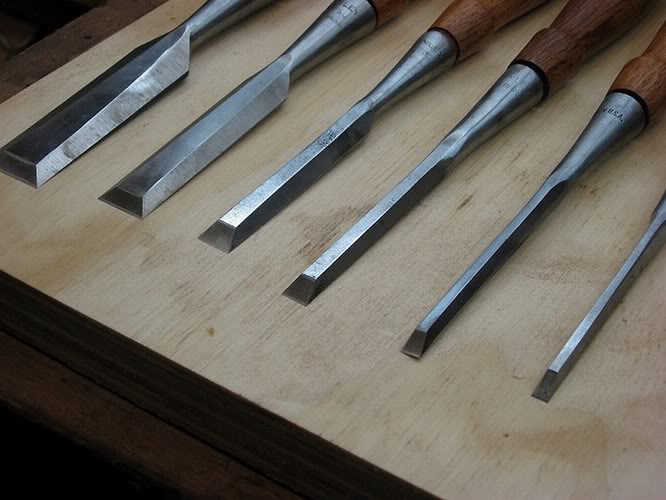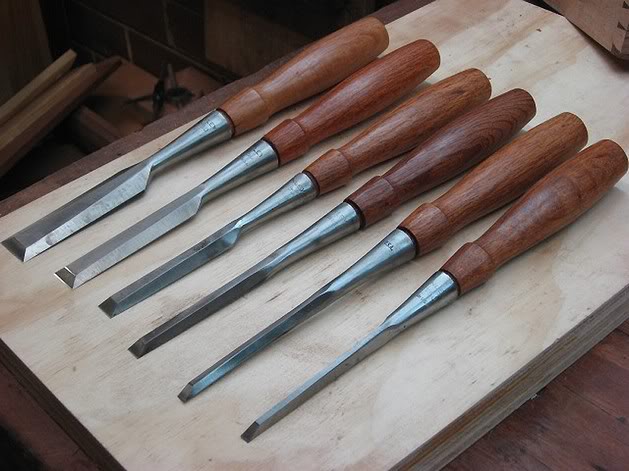AES
Established Member
@ D-W: Interesting. Forgive my ignorance, but what's a QUOTE: a vixen file UNQUOTE: please? And come to that, what does a backer for it look like please?



David,D_W":vxbypm8x said:My apologies. I missed earlier where you mentioned hard plastics - definitely on the harsh side for those (the vixen).
They're wonderful for steel where there's any surface area, though, even though I see conflicting information about whether or not they're recommended for it (some sites say non-ferrous metals only). When you can get a box of used files (as you've done with the aluminum files) for the price of one new one, the durability of a single file becomes less important.
I'd say on something like a large infill, I'll blow through one maxi cut and one vixen in two planes. That's pretty economical. All of the other more precise filing (dovetails, etc.) doesn't work through the fine work files fast enough to count more than something like $10 of budget for them. So for about $20 total, I've got all of my metal removal and nearly all of the finishing covered (and in theory, it could be less, as both can be water honed here for about $3 each if you manage to build a large enough pile of used files to justify shipping to a liquid honing specialist).
Cheshirechappie":drat65pu said:I'm a wee bit puzzled.
If you need a bevelled-edged chisel, could you not just buy a bevelled-edged chisel? After all, they're freely available in great variety; simple steels, fancy steels, fat lands, thin lands, bench, butt, paring, new or secondhand.
Can't really see why good money has to be spent on tools to make one, unless it's just out of curiosity, of course.
memzey":982rz926 said:David,D_W":982rz926 said:My apologies. I missed earlier where you mentioned hard plastics - definitely on the harsh side for those (the vixen).
They're wonderful for steel where there's any surface area, though, even though I see conflicting information about whether or not they're recommended for it (some sites say non-ferrous metals only). When you can get a box of used files (as you've done with the aluminum files) for the price of one new one, the durability of a single file becomes less important.
I'd say on something like a large infill, I'll blow through one maxi cut and one vixen in two planes. That's pretty economical. All of the other more precise filing (dovetails, etc.) doesn't work through the fine work files fast enough to count more than something like $10 of budget for them. So for about $20 total, I've got all of my metal removal and nearly all of the finishing covered (and in theory, it could be less, as both can be water honed here for about $3 each if you manage to build a large enough pile of used files to justify shipping to a liquid honing specialist).
I’ve re-honed my own files using a 10% dilution of hydrochloric acid. It works very well indeed. Usual safety requirements when working with corrosives apply.
Anyone else tried this?
Regards from Perth
Derek
swagman":1xosl8d8 said:...extremely effective on hardened steels.
swagman":1xosl8d8 said:...the final stage of re hardening and tempering the steel.
An hour in the HCL solution removes enough metal for you to be able to feel a faint ridge under your fingers denoting where the water line was. The files come up very sharp indeed and I have not noticed any particular brittleness. There can be quite a bit of crud to clean off afterwards depending on how many chisels are sharing the solution and what state they were in but nothing a brass brush can’t handle.D_W":32wzt2g6 said:memzey":32wzt2g6 said:David,D_W":32wzt2g6 said:My apologies. I missed earlier where you mentioned hard plastics - definitely on the harsh side for those (the vixen).
They're wonderful for steel where there's any surface area, though, even though I see conflicting information about whether or not they're recommended for it (some sites say non-ferrous metals only). When you can get a box of used files (as you've done with the aluminum files) for the price of one new one, the durability of a single file becomes less important.
I'd say on something like a large infill, I'll blow through one maxi cut and one vixen in two planes. That's pretty economical. All of the other more precise filing (dovetails, etc.) doesn't work through the fine work files fast enough to count more than something like $10 of budget for them. So for about $20 total, I've got all of my metal removal and nearly all of the finishing covered (and in theory, it could be less, as both can be water honed here for about $3 each if you manage to build a large enough pile of used files to justify shipping to a liquid honing specialist).
I’ve re-honed my own files using a 10% dilution of hydrochloric acid. It works very well indeed. Usual safety requirements when working with corrosives apply.
Thanks for the suggestion. I've used phosphoric and a long soak, but it always leaves the files a bit brittle. By the time I make two steel planes with a float, they have a lot of tooth damage (you can see it well - they'll cut until they're well rounded), and I've not sent anything to Boggs here (who has a good reputation).
How much metal can you take off with HCL, and do you notice any brittleness after doing so?
What can I say Derek; under 60 secs per side bevel, on a al/oxide grinding wheel, and you didn't burn or impede the steel from overheating; very few could achieve that desired result in such a short time frame.I have done this in a fraction of the time grinding the sides on a bench grinder. I made a jig to do this, used it for some chisels, but eventually just freehanded the sides. I'd say each side took under 60 seconds.
Andy; they are available in Aust. We have made some progress since the convict days.I'm with CheshireChappie on this one.
Swagman hasn't answered his question yet. Are bevel edged chisels hard to find in Australia?
Ed; the 1st chisel I posted was filed in its hardened state, the stainless steel rod I tested with the file should be around rockwell C #70, W1 tool steel is listed as #60. The W.M.Marples steel in its hardened state was too hard for this file. Not sure why given the results on stainless. steel. These will required annealing to file the side bevels.Er Stewie, did you mean to imply that you were working on the chisels in their hardened state?? That's why I was so impressed, but your later post strongly suggests you annealed the steel before you started.
Not to take anything away from your filing work, that's impressive either way, but I'm a lot less wowed by the file because any metalworking file worth its salt can file annealed tool steel, that's their bread and butter.
Hi Tom; these W.M.Marples will require annealing 1st. The handles were/ are removed before heat treatment. I will trial a water quench.Ah, you annealed them first
I was thinking you’d found a cheap alternative to the vallorbe Valtitans
Nice file work all the same.
Are you going to take the handles off before you heat treat? Guessing plan is as per a basic carbon steel of take it to non magnetic then quench in oil?
Phillip; cant argue with your logic. I chose a different path with the full length side bevels.If you have a chisel with deep lands, why not just grind off the first half to an inch of the land? How often do you need to work into tight corners accurately any deeper than that? The sides of a bevel edged chisel don't do anything. Some of mine have just less than the first half inch done.
Enter your email address to join: